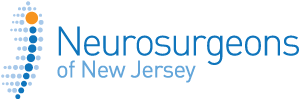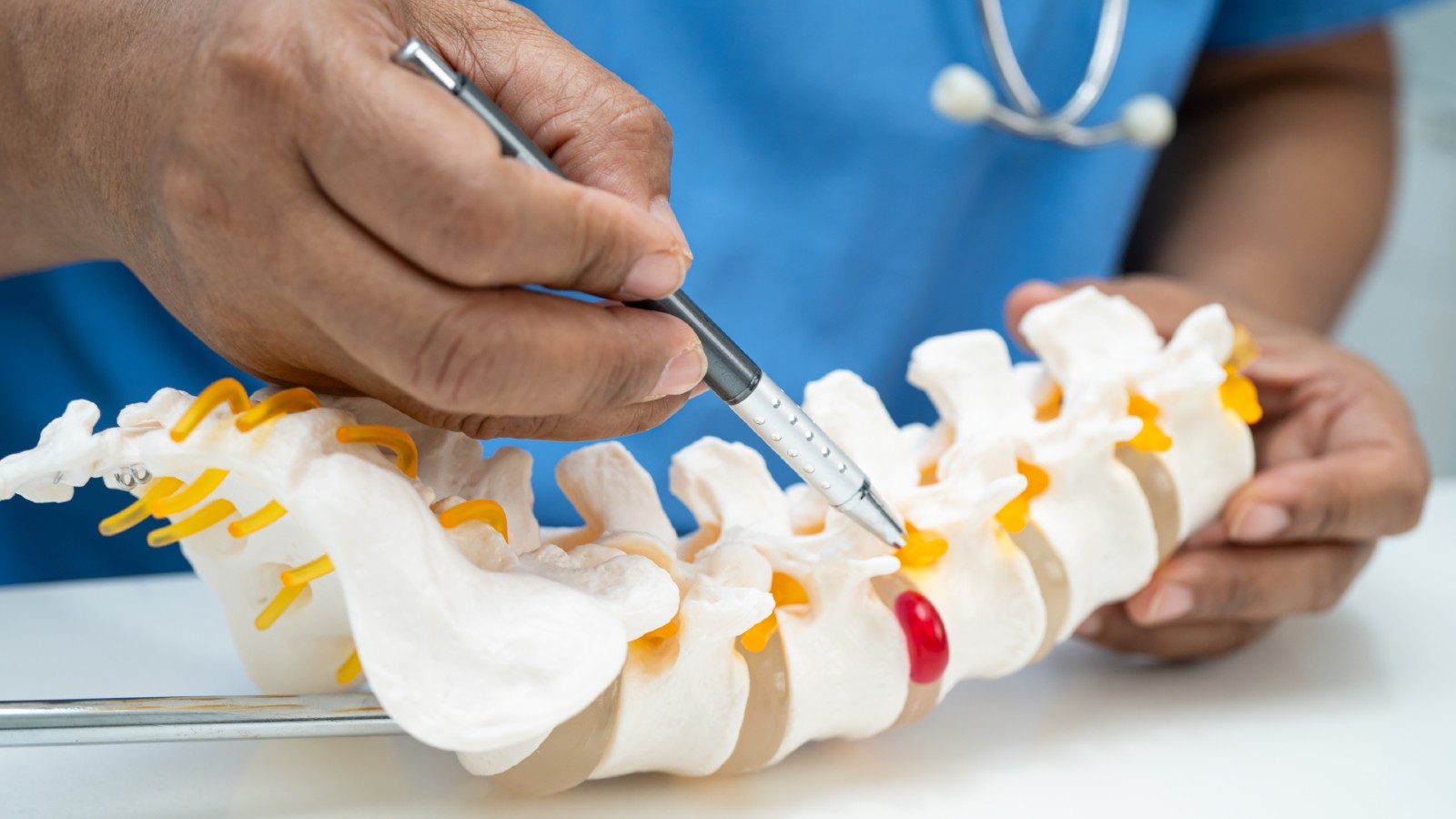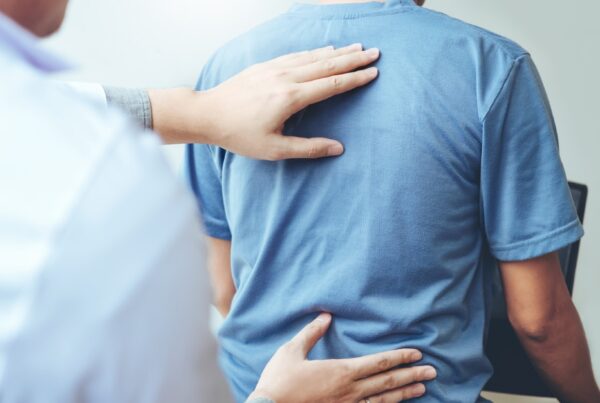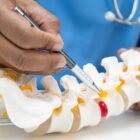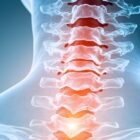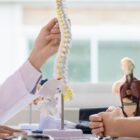Back pain can turn everyday activities into painful challenges, but understanding what’s causing your discomfort is the first step toward finding relief. Two conditions frequently behind chronic back pain are spinal stenosis and herniated discs. While both can significantly impact your quality of life, they develop differently and require distinct treatment approaches.
Knowing how these conditions compare helps you make informed decisions about your care and communicate more effectively with your healthcare team.
Understanding Spinal Stenosis
Spinal stenosis occurs when the spaces within your spine gradually narrow, creating pressure on the spinal cord and nerve roots. Picture your spinal canal as a protective tunnel housing delicate nerve structures. When this tunnel becomes constricted, it can compress the nerves inside, leading to pain and other symptoms.
This narrowing typically develops over the years as part of the natural aging process. Changes in your spine’s structure, such as bone thickening, ligament enlargement, and joint arthritis, all contribute to reducing the available space for nerves.
Common causes include:
- Arthritis affecting spinal joints
- Bone spur formation
- Ligament thickening
- Previous disc problems
- Spinal injuries or trauma
What Happens with a Herniated Disc?
A herniated disc involves the cushioning structures between your vertebrae. These discs act as shock absorbers, allowing your spine to bend and flex while protecting the bones from grinding against each other.
When a disc herniates, its soft inner material pushes through a tear in the outer layer. This displaced material can press against nearby nerves, causing pain that often radiates beyond your back.
Contributing factors include:
- Natural wear and tear over time
- Sudden trauma or injury
- Improper lifting techniques
- Repetitive twisting motions
- Excess body weight placing additional pressure on discs
Key Differences Between These Conditions
Location and Scope
Spinal stenosis affects the entire spinal canal and can occur at multiple levels simultaneously. It’s most commonly found in the lower back (lumbar region) and neck (cervical area).
A herniated disc typically affects one specific disc, though multiple discs can be involved. The problem is usually localized to the area where the disc has displaced.
How They Progress
Spinal stenosis usually develops gradually over months or years. Many people over 60 years old show signs of narrowing on imaging studies, although not everyone experiences symptoms.
Disc herniation can occur suddenly, such as when lifting a heavy object, or develop gradually as the disc degenerates over time.
Symptom Patterns
The way these conditions cause pain can help distinguish between them:
Spinal stenosis typically causes:
- Pain that worsens with walking or standing upright
- Relief when sitting or leaning forward
- Leg cramping or fatigue during activity
- Numbness or tingling in legs and feet
- Improved comfort when using a shopping cart or walking uphill
Disc herniation often produces:
- Sharp, shooting pain extending into the leg
- Increased discomfort when coughing, sneezing, or sitting
- Specific areas of numbness or weakness
- Pain that may improve with walking or position changes
- Muscle weakness in affected leg or foot
It's time to get back
to doing what you love.
Severity Comparison
Patients often wonder which condition is more serious. The answer depends entirely on your circumstances and how symptoms affect your daily life.
Spinal stenosis is a progressive condition that tends to worsen gradually over time. However, the slow development often allows people to adapt their activities and find management strategies.
Disc herniation can cause sudden, intense pain that dramatically impacts your ability to function. However, many cases improve significantly with time and appropriate treatment.
The “severity” of either condition is best measured by how much it limits your activities and quality of life rather than by the diagnosis itself.
How Doctors Make the Diagnosis
Healthcare providers use several approaches to determine which condition is causing your symptoms:
Clinical Evaluation
Your doctor will assess your reflexes, muscle strength, and range of motion. They’ll also discuss your pain patterns, including what activities worsen or improve your symptoms.
Imaging Studies
- MRI scans provide detailed views of soft tissues, including discs and nerves
- CT scans offer clear bone visualization and can reveal narrowing
- X-rays show bone alignment and structural changes
Specialized Testing
In some cases, nerve conduction studies help evaluate how well your nerves are functioning and pinpoint areas of compression.
Treatment Approaches
Conservative Management
Both conditions often respond well to non-surgical treatments:
Universal approaches:
- Physical therapy focused on strengthening and flexibility
- Anti-inflammatory medications for pain and swelling reduction
- Targeted steroid injections for localized relief
- Activity modifications to avoid symptom triggers
Specific to narrowing conditions:
- Assistive devices, such as walkers, for support during walking
- Forward-bending exercises (such as stationary cycling)
Specific to disc problems:
- Initial ice application for acute inflammation
- Heat therapy after the first few days
- Gentle stretching and movement exercises
Surgical Options
When conservative treatments don’t provide adequate relief, surgical intervention may be considered. At Neurosurgeons of New Jersey, we prioritize minimally invasive techniques whenever appropriate to promote faster recovery and better outcomes.
For spinal narrowing:
- Minimally invasive decompression procedures to create more space while preserving healthy tissue
- Minimally invasive fusion surgery in cases of instability, using smaller incisions and specialized instruments
- Advanced endoscopic techniques that reduce muscle disruption and accelerate healing
For disc problems:
- Minimally invasive removal of displaced disc material through targeted incisions
- Endoscopic discectomy for precise disc treatment with minimal tissue damage
- Minimally invasive disc replacement in select situations, offering improved recovery times
Our specialized spine surgeons carefully evaluate each patient to determine if minimally invasive surgery is the right approach. These advanced techniques typically offer significant benefits, including smaller incisions, less blood loss, reduced postoperative pain, and faster return to normal activities compared to traditional open procedures.
Daily Management Strategies
Living with Spinal Narrowing
People with this condition often find relief through:
- Using shopping carts or railings for support while walking
- Taking regular breaks during activities
- Sleeping in a reclined position
- Engaging in water-based exercises
Managing Disc Problems
Those with disc issues can help themselves by:
- Limiting prolonged sitting periods
- Learning proper body mechanics for lifting
- Maintaining good posture throughout the day
- Strengthening core muscles to support the spine
When to Seek Specialized Care
Consider consulting a spine specialist if you experience:
- Persistent pain lasting several weeks
- Lack of improvement with initial treatments
- Progressive numbness or weakness in your legs
- Worsening symptoms over time
- Significant interference with sleep or daily activities
Protecting Your Spine
While not all spine problems are preventable, you can reduce your risk through:
- Maintaining a healthy body weight
- Regular exercise helps keep supporting muscles strong
- Proper lifting and movement techniques
- Avoiding smoking, which impairs disc health
- Maintaining good posture habits
- Using a supportive mattress for quality sleep
Moving Forward with Confidence
Understanding the differences between these common spine conditions empowers you to work more effectively with your healthcare team. Both can cause significant discomfort, but they respond to different treatment strategies.
Many people with these conditions successfully return to active, comfortable lives with appropriate treatment. The key lies in obtaining an accurate diagnosis and following a treatment plan tailored to your specific needs.
Don’t let persistent back pain control your life. Early intervention often leads to better outcomes and can prevent your condition from progressing.
Ready to take control of your spine health? Our experienced specialists are here to help you understand your condition and explore your treatment options. Call 551-284-3265 today to schedule your consultation and begin your journey toward lasting relief.
FAQs
Can someone have both conditions simultaneously?
Yes, it’s possible to experience both issues at once. Sometimes a disc problem can contribute to spinal narrowing by occupying space in the canal. Having both conditions can make symptoms more complex and may require comprehensive treatment addressing multiple issues.
How do recovery times compare between these conditions?
Recovery varies significantly based on treatment approach and individual factors. Disc problems may improve within 6-12 weeks with conservative care, while spinal narrowing typically requires ongoing management as a chronic condition.
For surgical recovery, the timeline depends largely on whether the procedure involves instrumentation:
- Non-instrumented procedures (decompression only): Both disc herniations and spinal stenosis can be treated with minimally invasive decompression techniques, with typical recovery times of 3-6 weeks
- Instrumented procedures (fusion): When spinal stabilization is necessary, recovery typically extends to 4-6 months as the fusion heals, regardless of whether the underlying condition was disc-related or stenosis-related
Many patients with either condition can benefit from minimally invasive decompression surgery without the need for fusion, allowing for faster recovery and quicker return to normal activities.
What activities should be avoided with these conditions?
For spinal narrowing, limit prolonged walking or standing without rest breaks. With disc problems, avoid heavy lifting, extended sitting, and activities involving spine twisting or bending. However, complete bed rest isn’t recommended for either condition—gentle movement and appropriate exercises are beneficial.
Can these conditions cause permanent nerve damage?
Both conditions have the potential to cause lasting nerve damage if severe compression goes untreated for extended periods. However, with proper treatment, most people recover well. Early intervention is crucial for preventing permanent complications.
What are the success rates for surgical treatment?
Surgery for disc problems typically achieves 80-90% success rates for relieving leg pain, with most patients experiencing significant improvement. Procedures for spinal narrowing generally provide good pain relief in 70-80% of patients. Success depends on factors like overall health, condition severity, and adherence to post-operative instructions.

About Ridgewood
Our team of board certified physicians, located in Ridgewood, New Jersey, are dedicated to bringing you the latest developments and treatment options for spinal surgery. We strive to produce the most clarified & clear content to help you make informed decisions on your medical journey. The road to feeling like your true self should not feel lonely- Let us help you. Please call us to schedule a consultation and speak to one of our team members.
